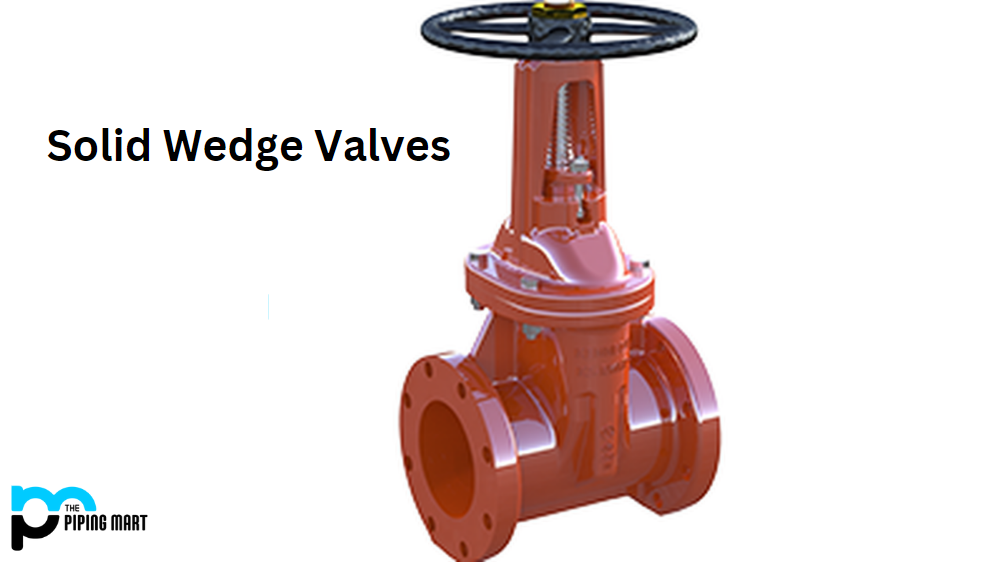When it comes to industrial valves, solid wedge valves are a popular choice. Solid wedge valves provide superior performance and longevity compared to other valves, making them ideal for industrial applications. However, like any piece of equipment, solid wedge valves have advantages and disadvantages that must be considered before investing in this technology. Let’s take a closer look at the pros and cons of solid wedge valves.
Advantages of Solid Wedge Valve
The major advantage of solid wedge valves over other types of valve designs is that they are extremely durable. They feature an all-metal construction with an internal hard-seating disc for superior flow control, which ensures outstanding performance in even the most extreme conditions. In addition, the metal construction allows these valves to last longer than other valves because they are less susceptible to erosion caused by pressure or temperature changes.
Another benefit is that these valves have very low maintenance requirements, meaning that once you install them, you don’t need to worry about frequent repairs or replacements. This makes them highly cost-effective as well as reliable over time. Finally, unlike some other valve designs, solid wedge valves can be used on high-pressure and low-pressure applications without compromising performance levels.
Reduced Cost
Solid wedge valves are less expensive than other types, such as butterfly or ball valves. This is because they require less material and are simpler in design. Additionally, solid wedge valves are typically easier to install than other valves.
Increased Flow Rate
Solid wedge valves have a higher flow rate than other types of valves, such as butterfly or ball valves. This is because they have a larger opening through which fluid can flow. Additionally, the lack of moving parts in solid wedge valves means less friction and resistance to fluid flow.
Reduced Maintenance
Solid wedge valves require less maintenance than other types, such as butterfly or ball valves. This is because they have fewer moving parts, which means there is less likelihood of something going wrong. Additionally, solid wedge valves are typically made from higher-quality materials than other types of valves, making them less likely to break down over time.
Increased Safety
Solid wedge valves are safer than other types of valves, such as butterfly or ball valves. This is because they have a fail-safe design that prevents fluid from flowing backwards through the valve if the seal fails. Additionally, solid wedge valves are less likely to leak than other valves.
Disadvantages of Solid Wedge Valves
The main disadvantage of using solid wedge valve designs is the cost; they tend to be more expensive than other industrial valves due to their higher-quality materials and robust construction. Furthermore, since they require a larger body size than some other valve designs, they can be difficult to fit into small spaces or tight locations where space is limited. Additionally, due to their heavy weight and bulky design, these valves can take longer to install than other valve systems.
Limited Flow Control
One of the primary disadvantages of solid wedge valves is that they have limited flow control. It can be difficult to regulate fluid flow through the valve, leading to problems such as clogs or leaks.
Susceptible to Wear and Tear
Another disadvantage of solid wedge valves is that they are susceptible to wear and tear. Over time, the moving parts of the valve can become worn down, eventually leading to the valve failing.
It Can Be Difficult to Repair
If a solid wedge valve does fail, it can be difficult to repair. This is because the design of the valve makes it difficult to access the internals for repairs. In some cases, replace the entire valve rather than attempt to repair it.
Not Suitable for All Applications
Solid wedge valves are also not suitable for all applications. For example, they are not typically used in applications where a high degree of precision is required, such as in some medical or scientific applications.
Higher Cost
Finally, solid wedge valves are more expensive than other valves, such as ball or butterfly valves. This is because they are more complex in design and require more materials.
Conclusion:
In conclusion, when evaluating whether or not to use solid wedge valve designs for your application needs, it’s important to consider both the advantages and disadvantages of this technology before deciding. These durable yet costly components may require extra time during installation. Still, they could offer superior performance in certain industrial environments compared to traditional alternatives – making them worth the investment in certain cases! Ultimately, it will depend on your specific application, so make sure you weigh all factors before investing in these components!

A passionate metal industry expert and blogger. With over 5 years of experience in the field, Palak brings a wealth of knowledge and insight to her writing. Whether discussing the latest trends in the metal industry or sharing tips, she is dedicated to helping others succeed in the metal industry.




